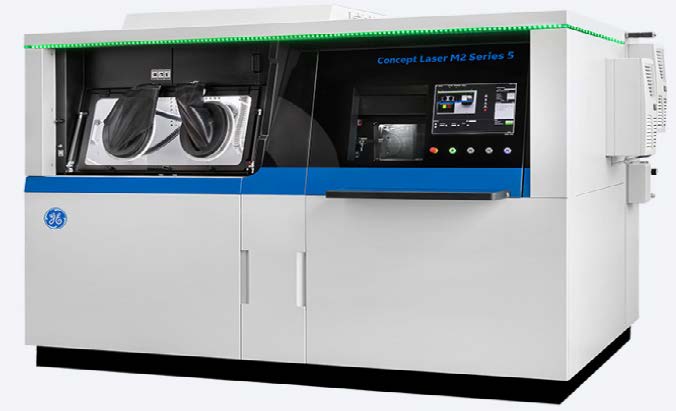


GE Additive M2 Series 5 Laser Powder Bed Fusion Printer
Problem
The adoption of additive manufacturing (AM) in research environments is limited due to the closed machine architecture of most systems, which hinders the development and integration of new technologies into commercial platforms. For example, selective laser melting (SLM) of large parts requires multiple lasers for cost-effective production, but multi-laser strategies are not developed. Integrating multi-lasers on a commercial system is challenging because of the residual stresses of the layer-by-layer additive process caused by rapid heating and cooling, steep temperature gradients, re-melting, and solidification of underlying layers.
Objective
The goal of the project was to deliver a GE Additive M2 Series 5 Laser Powder Bed Fusion (LPBF) system. This machine contained an open architecture and allowed for the rapid integration of new ideas and technologies into the platform. The machine had several new capabilities to demonstrate the open architecture: follow-me mode, multi-spectral sensing, and beam shaping. The M2 Series 5 system included two 1 kW fiber lasers and a chiller upgrade, as well as fast scanning mirrors and in-situ beam alignment features.
Technical Approach
The project team included the Additive Manufacturing Laboratory at GE Research Corporation, the Applied Research Laboratory at Pennsylvania State University (Penn State), and GE Additive. After a critical design review of the machine and the expected open architecture modifications, the team incorporated the existing ALSAM software package (developed in Project 3024.001) into the M2 Series 5 system. This final effort followed months of preliminary research and development of the ALSAM software package. GE Research built four fast scanning mirror (FSM) systems to replace the beam-bending mirrors on the M2 Series 4 system. The FSM systems provided the small angle motion needed to shape the beam. Effective beam shaping also required more laser power to achieve an optimal power density. The old 400-W IPG fiber lasers were replaced with 1000-W IPG lasers. An in-situ multibeam alignment approach was developed using a down beam sensor developed by Penn State. The dynamic beam shaping capability in the ALSAM system was demonstrated on the titanium alloy, Ti-6Al-4V.
Accomplishments
Deploying the ALSAM Platform to AFRL under this program demonstrated the technology in a production-representative environment, advancing the Manufacturing Readiness Level (MRL) of the open system to 7. The availability of the open machine enabled subsequent research programs aimed at achieving MRL8 by identifying specific process parameters, multi-laser strategies, feedback strategies and sensors to be validated prior to moving to a pilot line. The availability of this system stationed at a controlled site enables sensitive research to be conducted in a timely manner. Previously, no research asset existed in the continental United States to address specific concerns for refractory alloys critical to the success of high-speed systems. As a result of the effort, the project team successfully developed the GE Additive M2 Series 5 system by building on the previous Series 4 rendition.
Project Participants
Project Principal

Other Project Participants
- General Electric Additive
- Penn State University - Applied Research Laboratory
Public Participants
- U.S. Department of Defense
